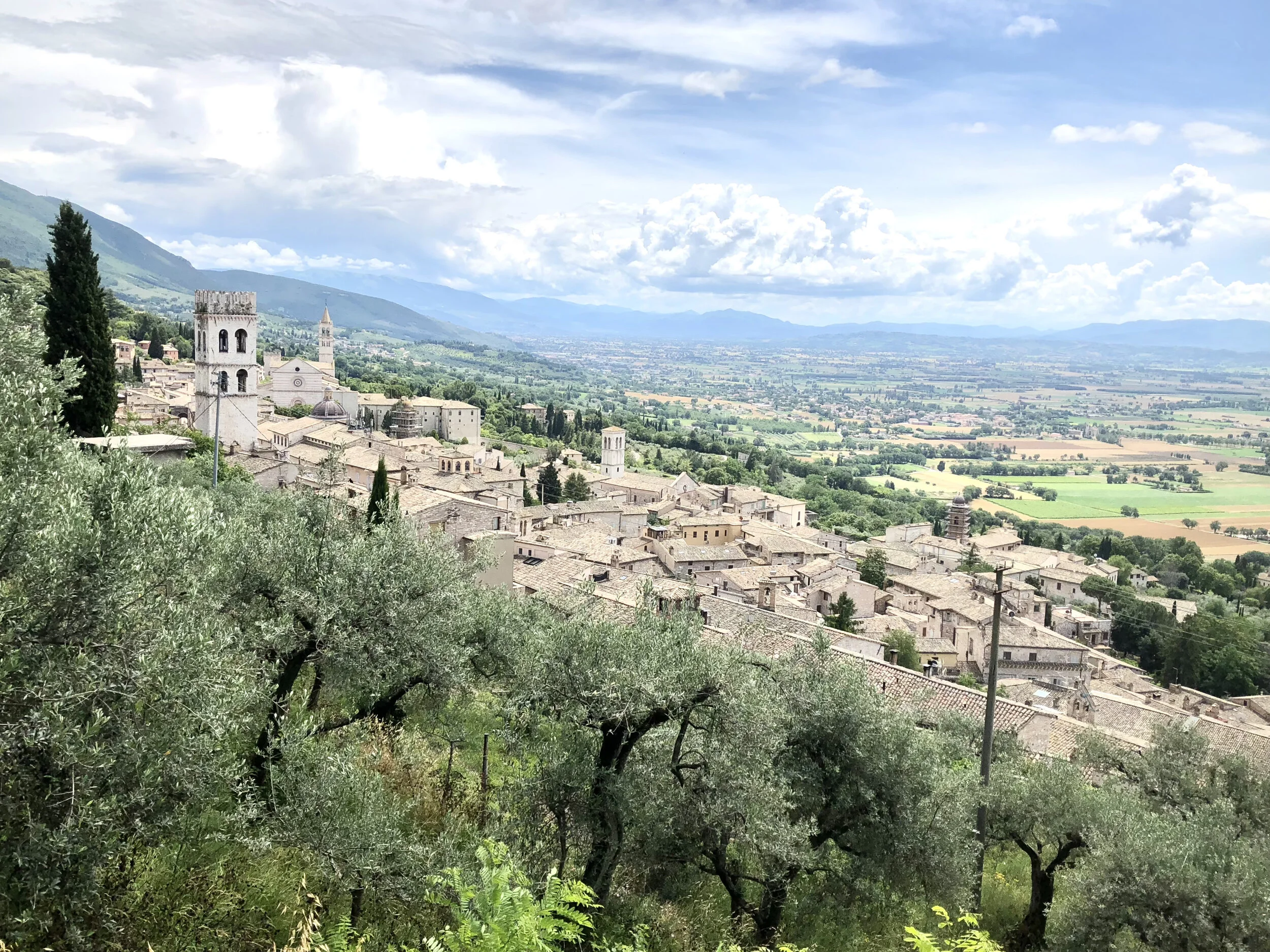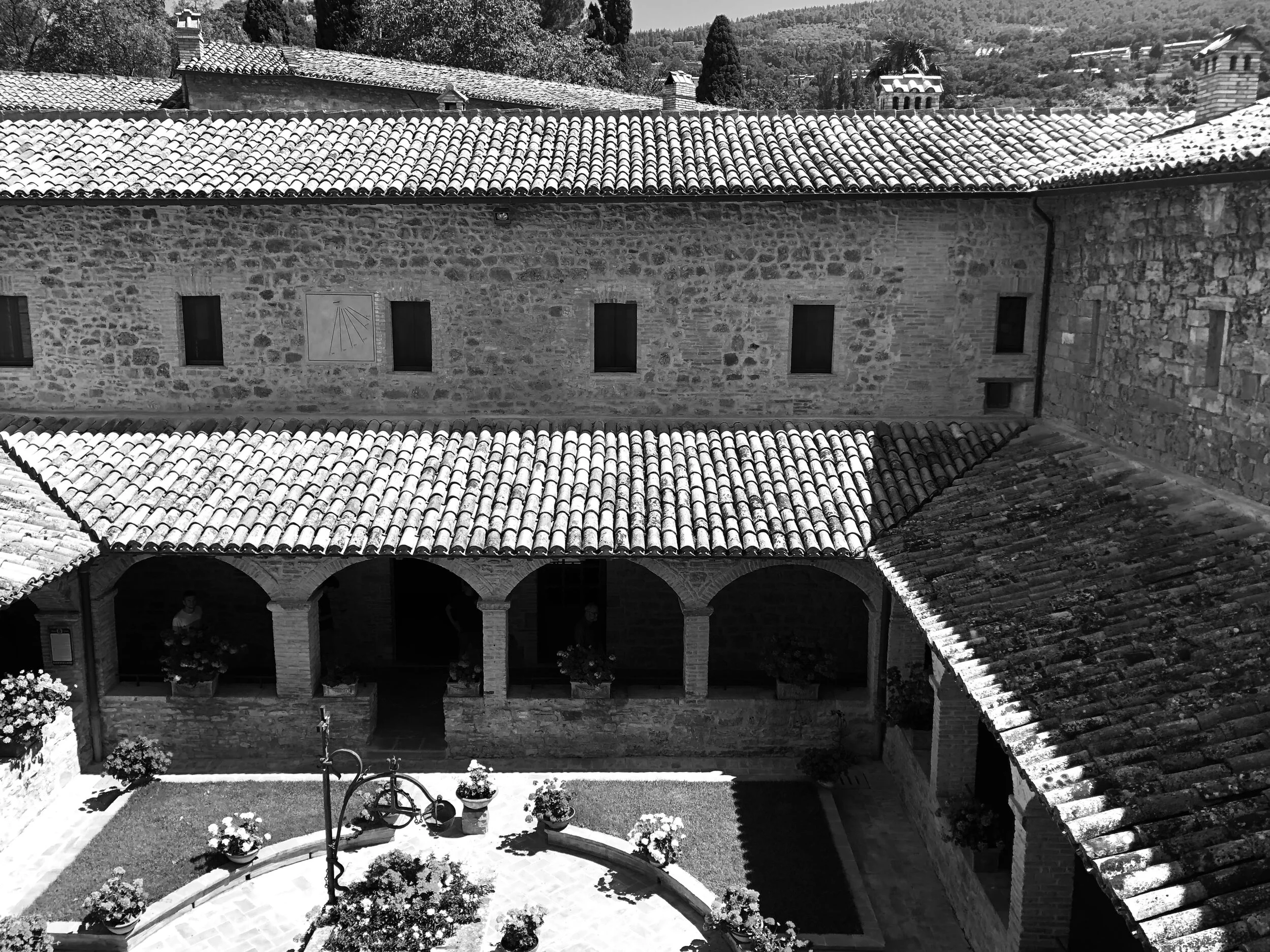Theme
Francis and Clare’s pilgrimage from violence to wholeness, transformation, healing and forgiveness
Sites
Rocca Maggiore (Assisi castle); Chiesa Nuova (Francis’ family home); Collestrada battlefield
Session 1
Welcome!
In our first session, we will explore the foundations of this series, with a special focus on the longing that Francis and Clare had for God’s peace in their lives and in the world. Specifically, we will:
Open with prayer
Reflect on Francis and Clare’s journey—and our own—as a pilgrimage, with special attention to the eight stages of pilgrimage:
The Longing
The Call
The Preparation
The Departure
The Journey
The Arrival at the Center
The Return
The Integration
Land in Assisi and visit three sites:
Rocca Maggiore
Chiesa Nuova
Collestrada
Get acquainted with the process and resources of our pilgrimage, and
Have time to reflect in the large group and in small groups.
You are invited to keep a journal, enjoy the readings, listen to the audio files, and enter deeply into your own pilgrimage of holy peace and nonviolence. You are also encouraged to share your thoughts with your fellow pilgrims using the Discussion Forum available on each session’s webpage.
Here’s a reading that you might find fun and thoughtful:
Gretel Ehrlich, “On the Road with God’s Fool: How St. Francis Lost Everything and Found His Way,” New York Times Magazine, 1999
Here is a map that might come in handy. Click here, then click on the map to expand it.
The Zoom link being used for every session is:
https://us02web.zoom.us/j/82948329997?pwd=NXZkUGJWOGJLMU5wcjFTeVh4eFU3UT09
Meeting ID: 829 4832 9997
Passcode: 015625
Pace e bene! / Peace and all good!
ASSISI
Since the death and canonization of Saint Francis and Saint Clare, Assisi has been a pilgrimage site that has drawn pilgrims from around the world. As you begin your pilgrimage, click here to learn more about the “City of Peace.”
ROCCA MAggiore
This castle dominates the hill town of Assisi. It was the military lynchpin that maintained the hegemony of its rulers, whether that was the Holy Roman Empire or the popes. It also symbolized the hierarchical nature of the culture, with the city organized with a top-down structure: armed force at the top, the nobility next, the merchant class below them, the artisans next, and the poor at the lowest part of the town. Peasants worked the land in the valley.
It is said that Francis as a young man – before his conversion – joined his fellow Assisians in destroying the fortress.
We begin our pilgrimage by ascending to Rocca Maggiore. Click here to continue.
CHIESA NUOVA
The “New Church” is said to have been built over the remains of Saint Francis’ family home. Its interior includes frescoes from the life of the saint. Francis’ father was a wealthy dealer in cloth and textiles, and his factory is said to have been in the basement below the family dwelling.
One somber note is what is called “the prison,” where Francis is said to have been chained by his father after his son’s life diverge from the path he planned for him: taking up the family business and bringing honor, status and wealth to his family.
Near this site is “The Oratory of Saint Francis,” a place of prayer and reflection that tradition says is a stable where Francis was born. Above the doorway are the Latin words, “Hoc oratorium fuit bovis et asini stabilium in quo natis est sanctus Franciscus mundi speculum” (“This oratory was the stable of cows and donkeys where Saint Francis, mirror of the world, was born”). Click here for more.
BONUS AUDIO:
FRANCIS AND CLARE
AT THE BEGINNING
TRACK 2: PLUCKED FROM THE FIRE
COLLESTRADA
In November 1202, twenty-year-old Francesco di Pietro di Bernardone rode off from Assisi to join engage in combat with the troops from the rival city Perugia.
Born to a wealthy cloth merchant and landowner, Francis had imbibed the values of his time and now was setting off to defend them.
Done up in gleaming armor and riding into battle on his warhorse—vigorous symbols of his family’s riches and growing stature, in contrast to most of the Assisi soldiers, who had little wealth and were headed into battle on foot—Francis was determined to best the Perugians in the latest round of the growing conflict between the two competing cities. Now he was headed to the town of Collestrada, at the edge of the Tiber River, to do battle. Click here for more.










